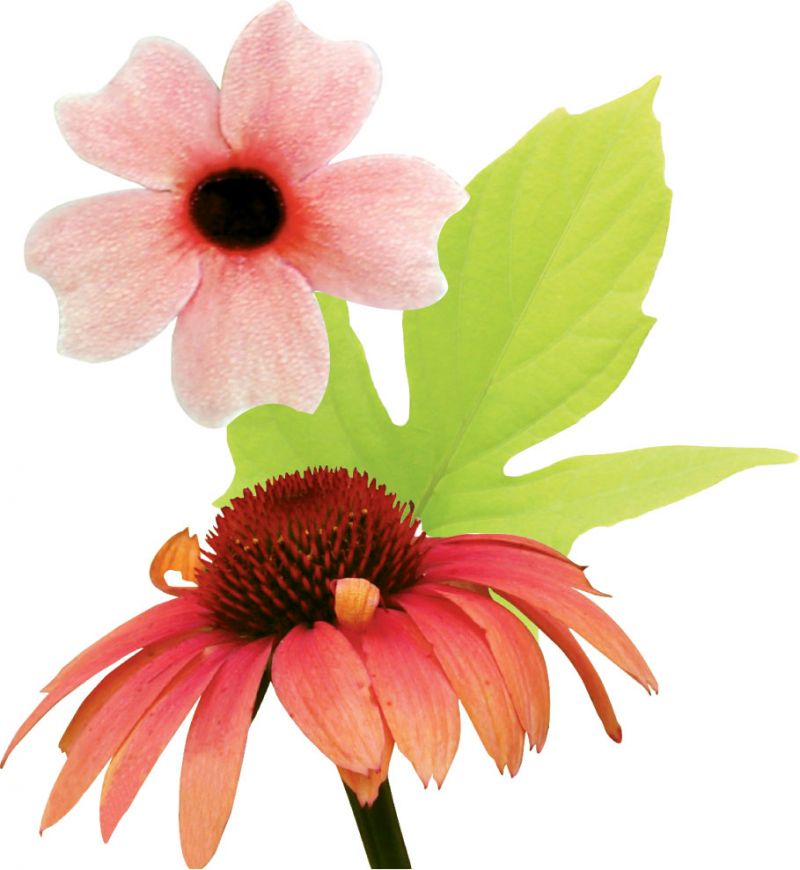
Planting a pretty pot alongside your mailbox is a fantastic way to enhance your home’s first impression, but because they’re frequently far from water sources, these container gardens can be tough to maintain. Get around that challenge by selecting sturdy, drought-tolerant plants happy to mingle in a large container (with drainage) that complements your abode’s style and color palette.
For a full-sun combination that will take you through summer, we suggest a pollinator-friendly display of sun coleus ‘El Brighto,’ pentas ‘Butterfly Deep Rose,’ and echinacea ‘Cheyenne Spirit.’ Add thunbergia ‘Blushing Suzie’ to climb up and over the mailbox and chartreuse sweet potato vine to cascade down the container’s sides.
Be sure to plant your selections using a premium potting mix with moisture control and fertilizer. Place each plant’s root ball level with the soil line, and to catch water, leave at least one inch of space between the soil and the top of the container.
Keeping plants pruned to scale will offer a tailored appearance and cuts down on watering needs, too. You’ll want to keep those beauties blooming, so give them a liquid foliar feed of 10-10-10 fertilizer every four weeks.
Dig it
What’s happening this month?
{ Throughout March }
MUSC Urban Farm
Learn about sustainable urban agriculture while lending a hand in MUSC’s half-acre educational garden on Tuesdays, Wednesdays, and Thursdays, as well as the first and third Saturdays of the month. MUSC Urban Farm, corner of Bee & President sts. Times vary. Free. www.academicdepartments.musc.edu/ohp/urban-farm
{ March 16-April 24 }
Festival of Houses & Gardens
Find inspiration at every turn during this Historic Charleston Foundation fest. The lineup includes ”Glorious Gardens Tours,” which each feature eight to 10 green spaces, as well as gardening-focused luncheon lectures. Locations, times, & prices vary. www.historiccharleston.org
{ March 19 }
Spring Native Plant Sale
Peruse perennials, shrubs, trees, grasses, ferns, and edibles at this Lowcountry Chapter of the S.C. Native Plant Society sale, this year including an expanded array of pollinator-friendly plants. Charles Towne Landing State Historic Site, 1500 Old Towne Rd. Saturday, 9 a.m.-noon. Free. www.scnps.org
Ask an expert: I’ve noticed white grubs in my yard. What do I do?
“White grubs are the larval stage of four beetles: the Japanese beetle, southern masked chafer, green June beetle, and May/June beetle. In spring, grubs begin feeding on the root system of turf grass—you might notice a damaged patch of grass that gradually grows in diameter. Healthy grass can tolerate five to seven grubs per square foot. To take a head count, cut three sides of a 12-inch square of turf. Peel it back to reveal the root system, and inspect the first one to three inches of soil. Repeat in several areas. If you find a plethora of pests, pick up a natural or chemical treatment from a local garden center. Application is best applied in early spring or late summer.”
—Joan McDonald, garden editor
TIP
Feed your camellias now to ensure maximum performance later. To encourage growth in shrubs you’ve recently planted, use a 12-4-8 fertilizer. To give established camellias a boost, go for 4-8-8. A second application in early May and a third in July will ensure healthier, more disease-resistant plants.